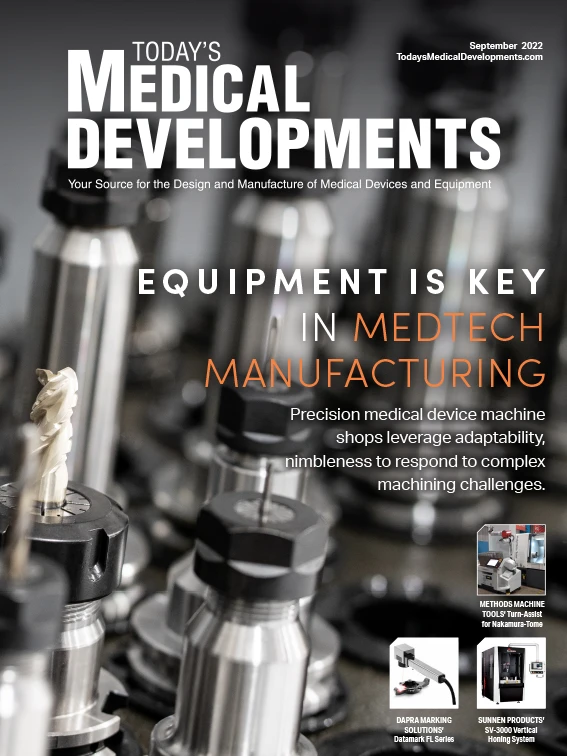
“Traditional light-based endoscopes can only resolve tissue anatomical information on the surface and tend to have large footprints,” says Wenfeng Xia, leader of the research team from the King’s College London School of Biomedical Engineering & Imaging Sciences. “Our new thin endoscope can resolve subcellular-scale tissue structural and molecular information in 3D in real-time and is small enough to be integrated with interventional medical devices that would allow clinicians to characterize tissue during a procedure.”
The endoscope, developed by King’s College London and University College London, consists of two optical fibers roughly the diameter of a human hair.
“The imaging speed of this photoacoustic endomicroscopy probe is two orders of magnitude higher than those previously reported,” Xia says. “It could eventually allow 3D characterization of tissue during various minimally invasive procedures such as tumor biopsies. This could help clinicians pinpoint the right area to sample, which would increase the diagnosis accuracy.”
Seeing with light, sound
Photoacoustic imaging works by shining light pulses onto absorbing body structures, such as red blood cells or DNA, generating acoustic waves detected by ultrasound sensors and used to form images of molecular, structural, and functional information from below the tissue surface.
Fiber-based photoacoustic endoscopy probes usually require a bulky ultrasound detector or have a low imaging speed, but the new endoscope addresses these challenges by combining wavefront-based beam shaping with light-based ultrasound detection and a fast algorithm for device control.
The probe uses two optical fibers – one for delivering pulsed light that generates photoacoustic waves and the other for ultrasound detection. A high-speed digital micromirror device with nearly one million tiny mirrors independently flipped at tens of thousands of frames per second changes the wavefront of the light so it can be focused and scanned quickly.
For ultrasound detection, the University College London researchers developed an optical microresonator – a tiny structure that confines light – fabricated on the tip of an optical fiber so when sound waves hit it, its thickness changes, modifying the amount of light reflected into the fiber and allowing optical detection of acoustic waves.
Imaging blood cells
The researchers tested the device by acquiring high-resolution images of mouse red blood cells covering a 100µm diameter area. “We were able to accomplish this at about 3 frames per second,” Xia says. “We also showed that the needle probe can be scanned to significantly enlarge the field-of-view in real-time by stitching together consecutive images.”
Imaging performance wasn’t substantially degraded when the probe was scanned, suggesting it isn’t affected by modest fiber bending. However, the team will investigate how complex fiber bending or semi-rigid configurations affect imaging performance.
“Although this work focused on the development of a photoacoustic endomicroscopy probe, the high-speed method used to deliver the excitation light can be used to incorporate other imaging modalities such as fluorescence imaging, Raman microscopy, and two-photon microscopy,” Xia concludes.
King’s College London
https://www.kcl.ac.uk

Explore the September 2022 Issue
Check out more from this issue and find your next story to read.
Latest from Today's Medical Developments
- Kistler offers service for piezoelectric force sensors and measuring chains
- Creaform’s Pro version of Scan-to-CAD Application Module
- Humanoid robots to become the next US-China battleground
- Air Turbine Technology’s Air Turbine Spindles 601 Series
- Copper nanoparticles could reduce infection risk of implanted medical device
- Renishaw's TEMPUS technology, RenAM 500 metal AM system
- #52 - Manufacturing Matters - Fall 2024 Aerospace Industry Outlook with Richard Aboulafia
- Tariffs threaten small business growth, increase costs across industries





